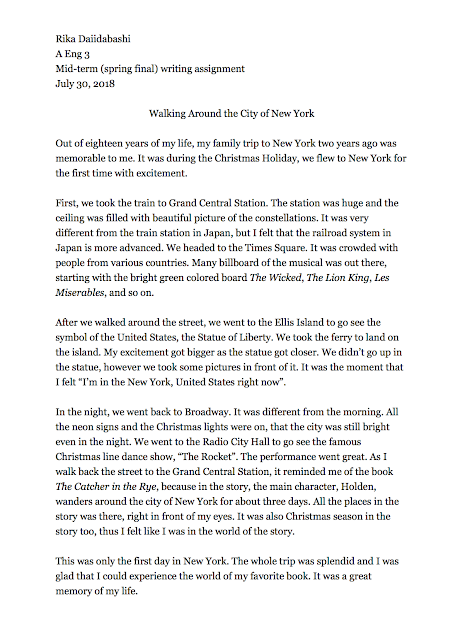Hello!
As promised, here is the Word formatting for the mid-term (spring final) writing assignment.
I have set it in an extra-large image size so you can see how the formatting looks - so my apologies if you have trouble seeing this on your Smartphones. It may be better to view this on a computer.
Feel free to print this out. It comes from an actual student composition from last year. The topic is different from what you are writing about, but the formatting is the same.
Please remember that any font is okay - so long as you set your typing to 12-point size. This is important as it is still small enough to fit on a page while still being at a readable size.
I recommend serifed fonts like Times New Roman, or the font I use on this blog - Georgia. Fonts like these, especially Times New Roman, are easily readable and save space.
Good luck, and I'll see you next week in our last meeting.
See you then!
I have set it in an extra-large image size so you can see how the formatting looks - so my apologies if you have trouble seeing this on your Smartphones. It may be better to view this on a computer.
Feel free to print this out. It comes from an actual student composition from last year. The topic is different from what you are writing about, but the formatting is the same.
Please remember that any font is okay - so long as you set your typing to 12-point size. This is important as it is still small enough to fit on a page while still being at a readable size.
I recommend serifed fonts like Times New Roman, or the font I use on this blog - Georgia. Fonts like these, especially Times New Roman, are easily readable and save space.
Good luck, and I'll see you next week in our last meeting.
See you then!
Image: Screenshot of anonymously-rendered student sample composition. All rights reserved on content to the original student.


















